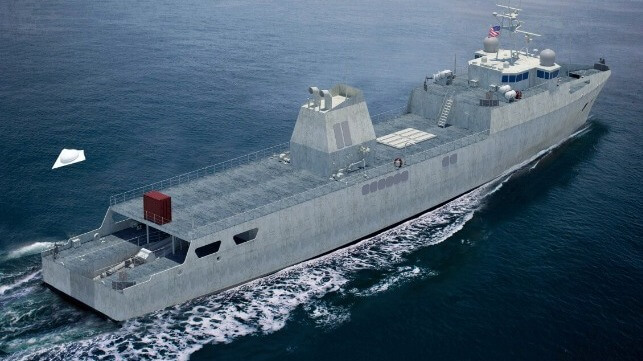Australia Plans to Buy Unmanned Warships

The Australian government has announced a plan to expand the size of the Royal Australian Navy, and a healthy share of the boost will be in the form of optionally-crewed warships that can be remotely controlled.
Australia initiated a full-scale review of its surface fleet in 2023, seeking to align its development with the nascent nuclear-sub partnership with the U.S. and the UK (AUKUS). To run the review, the government of Prime Minister Anthony Albanese turned to an outsider, retired U.S. Navy Vice-Admiral William Hilarides.
The review's results were not favorable. Hilarides' team concluded that Australia's "current and planned surface combatant fleet is not appropriate for the levels of risk" facing Australia, and that the existing plan is already under cost pressures. The fleet is also badly in need of renewal, and is now the oldest it has ever been.
Under the new plan, Australia will cut its existing acquisition plan for the high cost Hunter-class frigate from nine hulls down to six, saving about $7 billion in acquisition costs. It will then buy six American-spec Large Optionally-crewed Surface Vessels (LOSVs).
The design is better known by its U.S. Navy designation, Large Unmanned Surface Vessel (LUSV), upon which Australia's similarly-named LOSV will be based. The U.S. will go first, and plans to acquire eight of the vessels before the end of the decade.
LUSV is conceived of as a well-armed "magazine ship" about the size of an offshore supply vessel. It is intended to navigate autonomously, comply with COLREGs and keep itself running mechanically (within specified service periods). It is not intended to have an autonomous weapons package: instead, a remote, offboard human operator will have to initiate any target engagements. The model in question would have a magazine capacity of 32 vertical launch cells, the same as Australia's planned Hunter-class frigate.
Australia would benefit from the up-front R&D investment that the U.S. is making in LUSV. The U.S. Navy has issued $7 million early-phase study contracts to six designers, Austal USA, Huntington Ingalls Industries, Fincantieri Marinette, Bollinger Shipyards, Lockheed Martin and Gibbs & Cox. It is also planning to build a test site to trial the ship's mechanical systems before installation.
The news also reduces the scope of work that BAE Systems had hoped for on the Hunter-class frigate, but this program was already troubled by cost growth and delays. At a projected US$2.3 billion per hull, the Hunter-class was on track to be the world's most expensive surface combatant, and with less firepower than its less-expensive foreign peers. It was also running years behind schedule, and it was placed on the government's "projects of concern" list in 2022.
The Royal Australian Navy has already discussed retooling the Hunter-class program to fit some of the frigates with an expanded missile magazine, tripling their capacity at the expense of losing a multimission bay. It was not immediately clear whether the six surviving hulls in the Hunter-class program will be of the original design or the expanded-magazine variant.
The RAN will also get an upgrade to three existing Hobart-class destroyers (previously planned) and will buy 11 smaller "general-purpose frigates" based on a foreign design. German, Korean, Japanese and Spanish platforms are currently under consideration.

that matters most
Get the latest maritime news delivered to your inbox daily.
As it looks to expand and modernize its fleet, Australia also has to confront a related challenge - manning. Like its counterparts in the U.S. and UK, Australia's navy has recruitment and retention difficulties, as do its suppliers.
"At present one, and potentially additional Anzac [frigates], cannot be deployed due to lack of crews. Investing in new naval surface combatants will be for nought if at the moment of crisis, ships cannot be deployed because we simply lack personnel to crew them," warned Malcolm Davis, senior analyst at ASPI.
